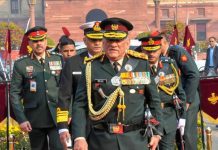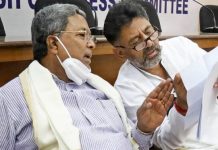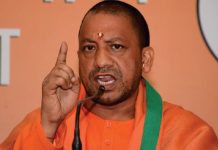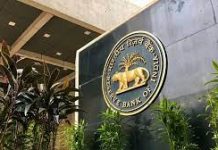
In his first public speech after he was named the RSS chief, Mohan Bhagwat said the RSS should evolve along modern lines. What does that mean?
Bhagwatji always says everything is changeable in the RSS except our core belief in the Hindutva ideology: that Hindustan is a Hindu rashtra [nation]. Contrary to what people think, we are not fixated on anything — not even on our uniform; even that will change whenever our cadres want. But our core ideology cannot change.
What are the key challenges before the RSS?
One of the challenges is that we are identified too closely with one political party, whereas the appeal of Hindutva cuts across all political parties. We took a major decision in 2005 — the Chitrakoot resolution — to completely abstain from electoral politics. Earlier, during elections, the RSS cadres would run parallel campaigns, such as the Jan Jagrans. Now, we want to promote the Hindu social agenda without being seen as an appendage of any political party. Our challenge is to maintain this fine balance between pursuing the Hindu agenda and keeping a distance from dayto- day politics.
Bhagwat is said to support LK Advani but not BJP President Rajnath Singh.
This campaign that he is Advani’s man does not hold water. He is everybody’s man. He is the man of the organisation and the ideology that it represents.
The general impression always was that the RSS leads and the BJP follows. But now it is said that Bhagwat is a supporter of Advani’s.
As I said, this is a spin given by a section of the media. In fact, he was on the dais when Advaniji’s book was released last year, and there he had said clearly that he didn’t know Advaniji well enough until he became the Sarkaryavah [General Secretary] in 2000.
Why doesn’t the RSS help the BJP sort issues, such as the one between Rajnath Singh and Arun Jaitley?
The BJP should have an internal mechanism to sort issues between two senior leaders. Why should the Sangh step in? The Sangh refused to intervene in the trouble between these two. Not a word about it was spoken during the Akhil Bharatiya Pratinidhi Sabha, though senior BJP leaders were present there.
What are the other challenges that the RSS faces?
We face an image problem. There is a huge gap between our image and reality, accentuated by incidents like [last year’s Christian killings in] Kandhamal in Orissa and the 2002 [anti-Muslim] violence in Gujarat. To some extent, these incidents have created an image for the organisation that does not bode well. We know the reality is different. A large section of the Hindu society that has seen us directly understands the reality. But the wrong image persists in some sections. Under Bhagwatji’s guidance, we know we would be able to address this issue.
What do you mean that the RSS has an image problem?
After the post-Godhra violence, there was propaganda the world over that the RSS is anti-Muslim and a violent organisation. The whole case was presented wrongly by a section of the media as if Hindus were butchering Christians and Muslims, which is not the reality. The ground situation is totally different, both in Gujarat as well as in Kandhamal.
A report telecast on a reputed English TV channel had sound-bites from some people accusing the RSS and the Hindu groups of the violence against Christians. Later, I saw a documentary by a filmmaker in Kolkata in which the same people were speaking against the Christians! Last week, a story on [Gujarat Chief Minister] Narendra Modi in The Atlantic magazine of the US devoted one full paragraph to abusing us.
How do you propose to resolve this?
The image and the reality are 180 degrees apart. We have thought of making a major documentary on this question of our image and the reality. See, many things that are said about the RSS are not true. For example, it is said that only Brahmins can hold positions in the RSS. But half our pracharaks are not even from the so-called forward castes. People say this just because the RSS head may be from a so-called forward caste.
What is Bhagwat’s approach to this problem?
He is a great pragmatic leader. Today, if I can discuss with you so many things, that is because of the new visionary leadership. He believes we should be open and communicate with society. Earlier, we spoke only to our cadres. Now we plan to meet opinion-makers to put forward our points of view.
What kind of opinion-makers?
A huge spectrum: academicians, eminent citizens such as a doctor who could be a member of the Rotary or Lion’s club…
Within the RSS, too, we have challenges. Three years ago, we had 50,000 shakhas [branches]. In 2007-08, we got busy with celebrating the birth centenary of the second RSS chief, Guru Golwalkarji. Our shakhas were cut down to 44,000. We now aim to take it back to 50,000.
We plan to focus in a big way on reviving and protecting tribal culture. The Vanvasi Kalyan Ashram runs regular centres in 14,000 of the country’s 30,000 tribal villages. We go through education, healthcare and literacy campaigns.
A prominent saint from Karnataka is undertaking a Gau Gram Sanrakshan Yatra [Cow-Village Protection March], which will touch at least 300,000 villages. The Yatra will collect 10 crore signatures to ask the government to revive the rural economy. The protection of our cattle wealth, rural industry and agriculture has to be the focus of any development.
What about groups like the Sri Ram Sene and their attacks on the women visiting pubs in Mangalore?
The Congress leaders spoke more than us against the women going to the pubs. What did [Rajasthan Chief Minister] Ashok Gehlot say about the pub culture? When a TV journalist was killed in New Delhi last year, didn’t [Delhi Chief Minister] Sheila Dixit ask what she was doing alone at 3 am, the time she was killed?
Groups like Sri Ram Sene have no connection with the RSS. We don’t support vandalism. But we have views on many social issues. For example, we don’t approve of Valentine’s Day celebrations.
You say the RSS realises that the appeal of Hindutva cuts across political parties. The Communists must be out of the question, but which other political parties have RSS members?
We have our members in several political parties, including the Congress. We interact with them regularly. But this does not mean that we oppose the BJP. The BJP is closest to us in terms of ideology. Someone is 10 feet away from us; someone else is 1 km away — that’s the difference.
Bhagwat is said to have been hands-on as General Secretary. How different will he be in his new role?
Nothing changes with position in the RSS. His work will continue as before. The RSS is not personality-oriented. Rather, the leaders take decisions collectively through consultation.
The outgoing RSS chief KR Sudarshan is 79 years old. Bhagwat is 58. Does being young have any significance?
Bhagwatji’s rapport with the entire cadres is much stronger as he has the advantage of age. He is a patient listener. Anyone can walk up to him and share his thoughts and ideas. He is very open-minded and transparent. The cadres at all levels feel comfortable talking to him. He answers his e-mails personally as much as possible.
He has an excellent grounding in our ancient knowledge and wisdom, while he also has a scientific temper. In his speech after taking over last week he quoted from a magazine of the Ramakrishna Mission, which he regularly reads. Incidentally, Bhagwatji is also a regular reader of Reader’s Digest and extensively quotes from it in his speeches.
ajit@tehelka.com


 How do you read the ceasefire pact with the Taliban?
How do you read the ceasefire pact with the Taliban?





























